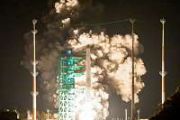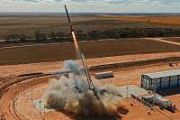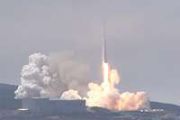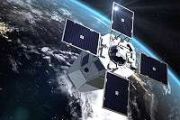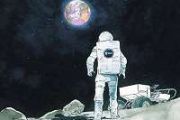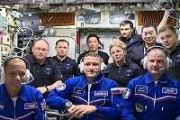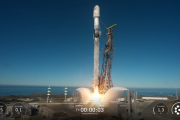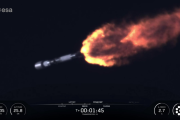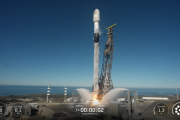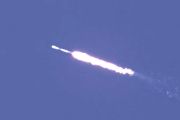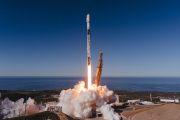
Copernical Team
Sidus Space announces deal with Red Canyon Software to support LizzieSat Constellation
 Sidus Space, Inc. (NASDAQ: SIDU), a Space-as-a-Service satellite company focused on commercial satellite design, manufacture, launch, and data collection, is pleased to announce a strategic partnership with Red Canyon Software, Inc. (Red Canyon) to support LizzieSat Constellation of 100 Satellites.
Through this partnership, Red Canyon will support the design, development, assembly, integra
Sidus Space, Inc. (NASDAQ: SIDU), a Space-as-a-Service satellite company focused on commercial satellite design, manufacture, launch, and data collection, is pleased to announce a strategic partnership with Red Canyon Software, Inc. (Red Canyon) to support LizzieSat Constellation of 100 Satellites.
Through this partnership, Red Canyon will support the design, development, assembly, integra Indian Space Agency decommissions communication satellite
 Space debris has become a real concern for space exploration agencies worldwide. According to estimates, there are 7,200 artificial satellites in total orbiting Earth and 27,000 pieces of man-made debris caught in orbit.
The Indian Space Research Organisation (ISRO) has successfully decommissioned a 14-year-old communication satellite, INSAT-4B, which provided services in the Ku and C freq
Space debris has become a real concern for space exploration agencies worldwide. According to estimates, there are 7,200 artificial satellites in total orbiting Earth and 27,000 pieces of man-made debris caught in orbit.
The Indian Space Research Organisation (ISRO) has successfully decommissioned a 14-year-old communication satellite, INSAT-4B, which provided services in the Ku and C freq For clues to neutron stars, scientists probe lead nuclei's thin neutron skin
 Nuclear physicists explore different nuclei to learn how protons and neutrons behave. For instance, they have found that nuclei made of just a few protons and neutrons typically contain close to an equal number of each. But as nuclei get heavier, they need to pack in more neutrons than protons to remain intact.
These extra neutrons tend to stick to the outer edges of heavy nuclei and form
Nuclear physicists explore different nuclei to learn how protons and neutrons behave. For instance, they have found that nuclei made of just a few protons and neutrons typically contain close to an equal number of each. But as nuclei get heavier, they need to pack in more neutrons than protons to remain intact.
These extra neutrons tend to stick to the outer edges of heavy nuclei and form NASA embarks on 3-month alignment of Webb telescope's massive mirror
 NASA has started the tedious, precise job of aligning 18 sections of the James Webb Space Telescope's giant golden mirror.
The mirror had to be large enough to capture infrared light from the universe's earliest galaxies, but also had to be sectioned and folded in order to build and launch.
Now, NASA engineers and astronomers will attempt to reposition all 18 hexagonal sections s
NASA has started the tedious, precise job of aligning 18 sections of the James Webb Space Telescope's giant golden mirror.
The mirror had to be large enough to capture infrared light from the universe's earliest galaxies, but also had to be sectioned and folded in order to build and launch.
Now, NASA engineers and astronomers will attempt to reposition all 18 hexagonal sections s The Magnetic Field in Milky Way "Bones"
 Star formation in the Milky Way primarily occurs in long, dense filaments of gas and dust that stretch along the spiral arms. Dubbed "bones" because they delineate the galaxy's densest skeletal spiral structures, these filaments are characterized by being at least fifty times longer than they are wide and having coherent internal motions along their lengths.
While most of the key physical
Star formation in the Milky Way primarily occurs in long, dense filaments of gas and dust that stretch along the spiral arms. Dubbed "bones" because they delineate the galaxy's densest skeletal spiral structures, these filaments are characterized by being at least fifty times longer than they are wide and having coherent internal motions along their lengths.
While most of the key physical Saturn's High-Altitude Winds Generate Extraordinary Aurorae, Study Finds
 Space scientists have discovered a never-before-seen mechanism fueling huge planetary aurorae at Saturn. A University of Leicester-led team has found that Saturn is unique among planets observed to date in that some of its aurorae are generated by swirling winds within its own atmosphere, and not just from the planet's surrounding magnetosphere.
The study, which is based on observations ma
Space scientists have discovered a never-before-seen mechanism fueling huge planetary aurorae at Saturn. A University of Leicester-led team has found that Saturn is unique among planets observed to date in that some of its aurorae are generated by swirling winds within its own atmosphere, and not just from the planet's surrounding magnetosphere.
The study, which is based on observations ma Sols 3381-3382: Whence We Came
 After our adventures further uphill, Curiosity is backing down hill to get to the start of the path she will take up to the "Greenheugh Pediment." We are still surrounded by amazing stratigraphy and have the benefit of having been through here before. We can fill in missing pieces of terrain, and follow up interesting observations. Mastcam and ChemCam imaging fills both needs today.
Mastca
After our adventures further uphill, Curiosity is backing down hill to get to the start of the path she will take up to the "Greenheugh Pediment." We are still surrounded by amazing stratigraphy and have the benefit of having been through here before. We can fill in missing pieces of terrain, and follow up interesting observations. Mastcam and ChemCam imaging fills both needs today.
Mastca NASA awards contract for first rocket to launch from another planet
 NASA has started the early processes of constructing a $194 million small rocket that will launch from Mars, which will be the first known rocket launch from another planet.
The so-called Mars Ascent Vehicle, or MAV, has been designed to fly to Mars, receive Martian rock samples from a rover and blast back into space. It's part of a plan to return the first-ever rocks from the Red Plane
NASA has started the early processes of constructing a $194 million small rocket that will launch from Mars, which will be the first known rocket launch from another planet.
The so-called Mars Ascent Vehicle, or MAV, has been designed to fly to Mars, receive Martian rock samples from a rover and blast back into space. It's part of a plan to return the first-ever rocks from the Red Plane How Mars lost its oceans
 It has long been known that Mars once had oceans due in part to a protective magnetic field similar to Earth's. However, the magnetic field disappeared, and new research may finally be able to explain why. Researchers recreated conditions expected in the core of Mars billions of years ago and found that the behavior of the molten metal thought to be present likely gave rise to a brief magnetic f
It has long been known that Mars once had oceans due in part to a protective magnetic field similar to Earth's. However, the magnetic field disappeared, and new research may finally be able to explain why. Researchers recreated conditions expected in the core of Mars billions of years ago and found that the behavior of the molten metal thought to be present likely gave rise to a brief magnetic f NASA Prepares to Join Two Major Parts for Artemis II Core Stage
 Technicians are preparing to connect two major parts of the Space Launch System (SLS) rocket's Artemis II core stage. On Jan. 30, technicians moved the largest part of the stage, the 130-foot liquid hydrogen tank to the vertical assembly area at NASA's Michoud Assembly Facility. Here, it will be prepared for joining with the 66-foot forward assembly.
The forward assembly comprised of the j
Technicians are preparing to connect two major parts of the Space Launch System (SLS) rocket's Artemis II core stage. On Jan. 30, technicians moved the largest part of the stage, the 130-foot liquid hydrogen tank to the vertical assembly area at NASA's Michoud Assembly Facility. Here, it will be prepared for joining with the 66-foot forward assembly.
The forward assembly comprised of the j 





